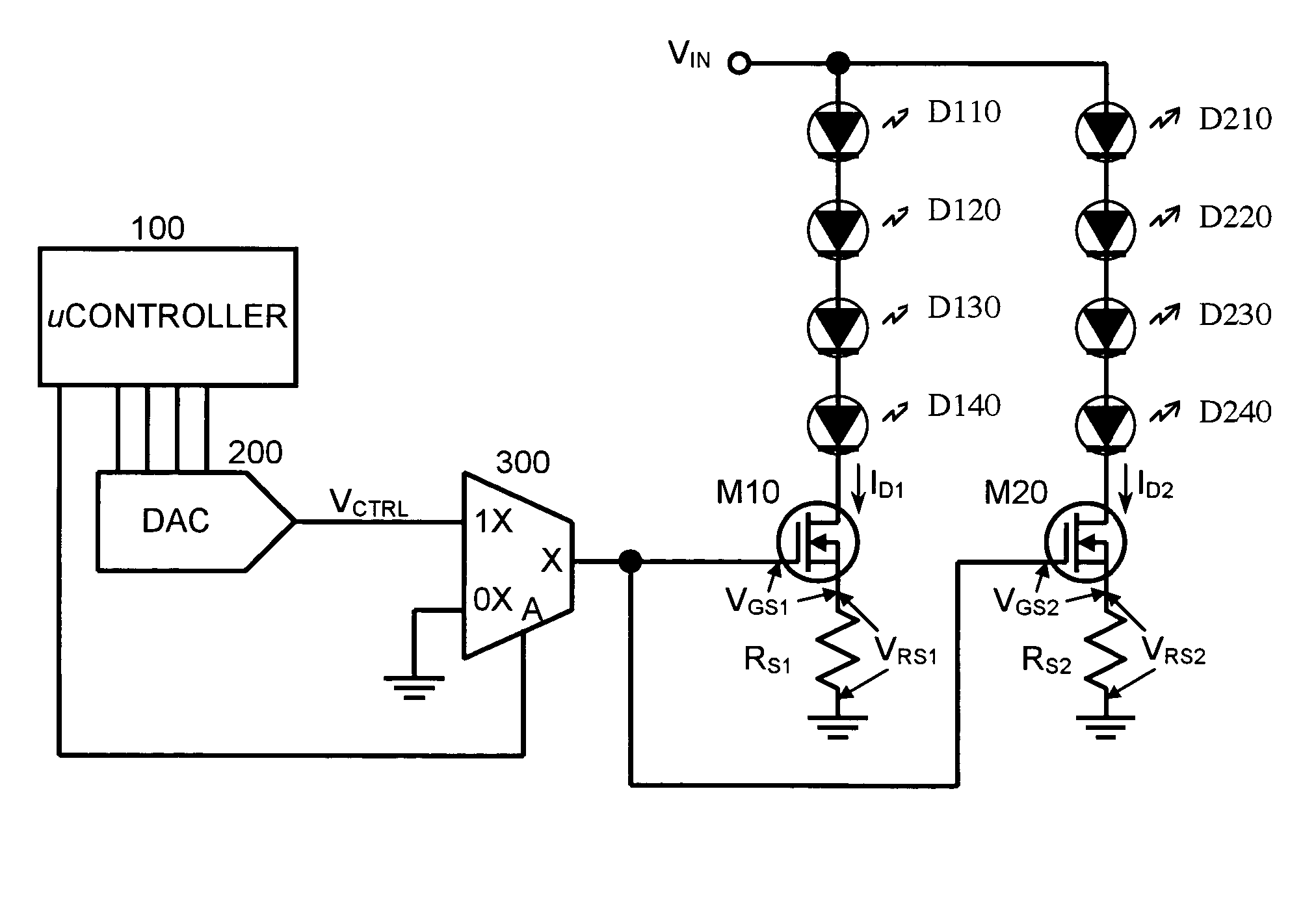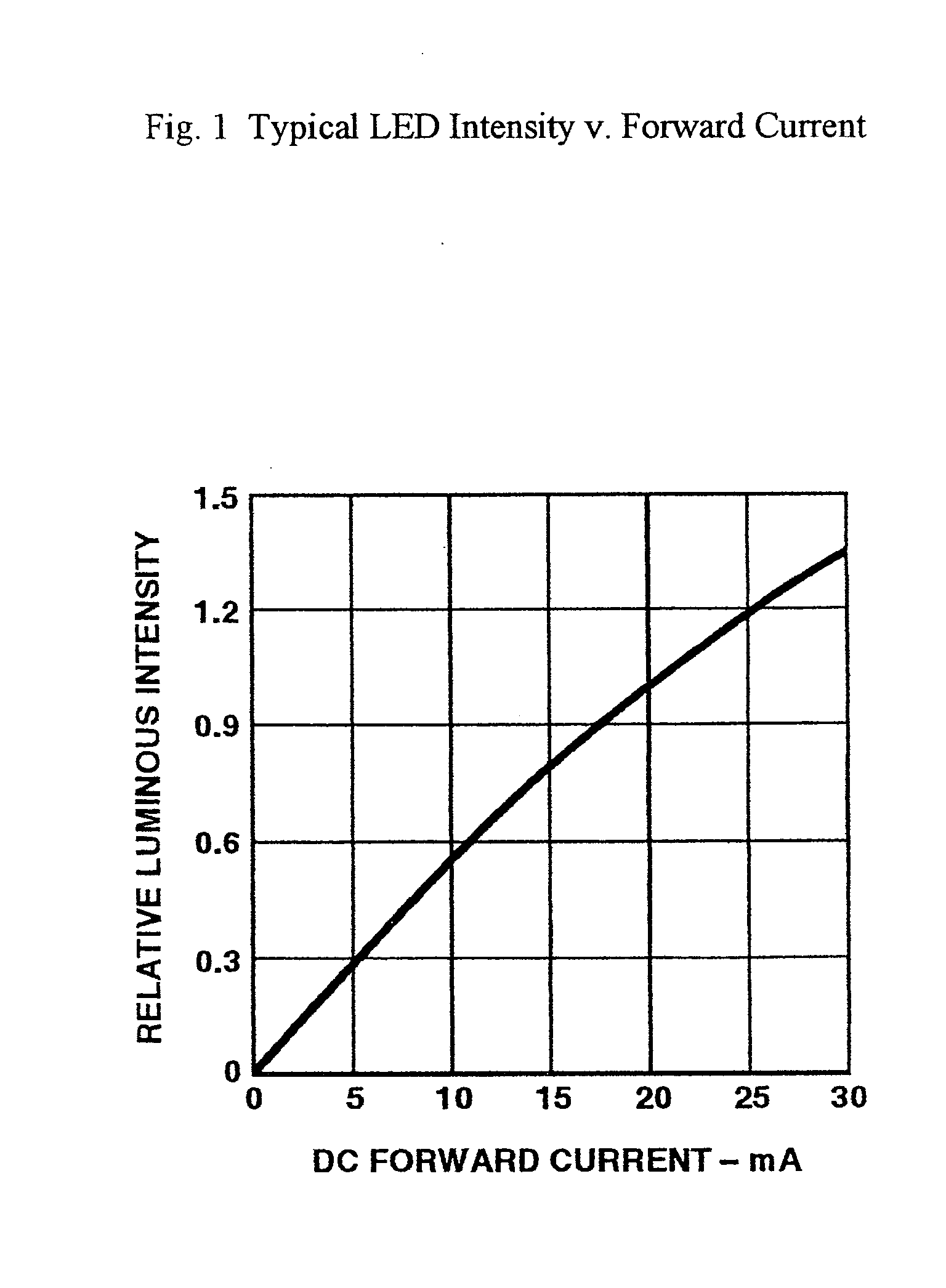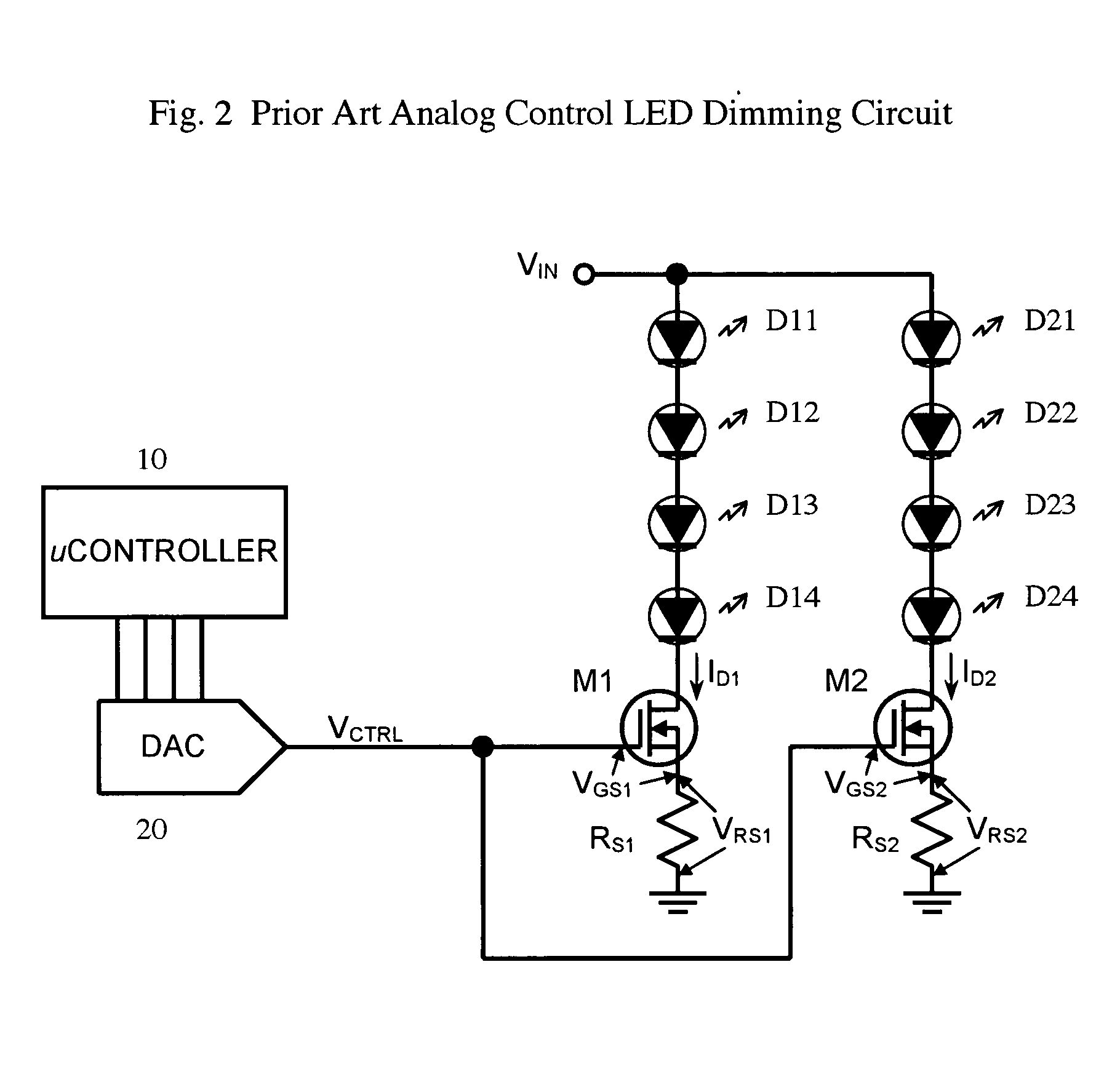Modulated control circuit and method for current-limited dimming and color mixing of display and illumination systems
a control circuit and module technology, applied in the direction of instruments, light sources, electroluminescent light sources, etc., can solve the problems of asymmetric power supply load, short useful life, and faster deformation of forward current levels, and achieve the effect of reducing the number of modules
- Summary
- Abstract
- Description
- Claims
- Application Information
AI Technical Summary
Benefits of technology
Problems solved by technology
Method used
Image
Examples
Embodiment Construction
[0024] The present invention is best understood in relation to the prior art Analog Control circuit. FIG. 2 shows a prior art analog control LED dimming circuit. Switching devices, such as metal oxide semiconductor field effect transistors (MOSFETs) M1 and M2 along with source resistors RS1 and RS2 provide the current limiting function for their respective series strings of LEDs D11, D12, D13, D14 and D21, D22, D23, D24, respectively. That is, MOSFETs M1 and M2 and resistors RS1 and RS2, respectively, vary the current output to the LEDs in accordance with the voltage level of the signal input into the MOSFETs. Input / output port of microcontroller 10 is coupled to a digital analog converter 20 which provides the analog control voltage VCTRL to MOSFETs M1 and M2. Concentrating on the first current limiting circuit, it can be seen that with the DAC output at Ground potential (VCTRL=0V), the Gate-to-Source voltage (VGS1) of MOSFET M1 will be 0V, and the MOSFET will be off. Thus, no curr...
PUM
 Login to View More
Login to View More Abstract
Description
Claims
Application Information
 Login to View More
Login to View More - R&D
- Intellectual Property
- Life Sciences
- Materials
- Tech Scout
- Unparalleled Data Quality
- Higher Quality Content
- 60% Fewer Hallucinations
Browse by: Latest US Patents, China's latest patents, Technical Efficacy Thesaurus, Application Domain, Technology Topic, Popular Technical Reports.
© 2025 PatSnap. All rights reserved.Legal|Privacy policy|Modern Slavery Act Transparency Statement|Sitemap|About US| Contact US: help@patsnap.com



